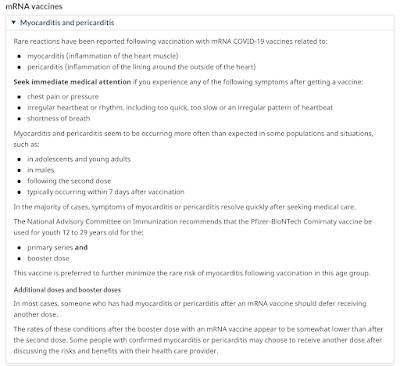
The Thailand Myocarditis Study – Is This the Safety Signal That Will Halt Adolescent COVID-19 Vaccinations?
While it hasn’t received a great deal of coverage in the mainstream media, myocarditis has proven to be one of the adverse side effects of the COVID-19 vaccines, particularly among young males. While government health officials have taken the stance that there are insufficient cases of myocarditis among young males to send out a safety signal to vaccine manufacturers and those who are being vaccinated as shown here for Canada:
…and here for the United States:
Based on what government “experts” are telling us, one could be forgiven for thinking that the risk of COVID-19 in adolescents is far higher than the risk of post-COVID-19 vaccination cardiac adverse events.
According to the Myocarditis Foundation, while many myocarditis patients live long lives post-diagnosis with no major long-term side effects, in some cases, ongoing cardiovascular medications and even heart transplants may be needed. Here are two quotes:
“Overall, myocarditis which can cause dilated cardiomyopathy, are thought to account for up to 45 percent of heart transplants in the U.S. today…
...myocarditis can recur, and in some cases can lead to a chronically enlarged heart (called dilated cardiomyopathy). There is no known way to prevent recurrence of myocarditis. However, the risk of recurrence is low (probably about 10 to 15 percent).“
A recent peer-reviewed prospective cohort study of the cardiovascular effects of Pfizer’s Comirnaty/BNT162b2 vaccine on adolescents living in Thailand:
…looked at the post-vaccination health of 301 adolescents (202 males and 99 females) aged 13 to 18 years with a mean of 15 years from two schools using ECG, echocardiography and cardiac enzymes which were collected at baseline (i.e. prior to vaccination), days 3, 7 and 14 (optional) after receiving the second dose of the vaccine. Patients who had a history of cardiomyopathy, tuberculosis, constrictive or tuberculosis pericarditis or an allergy to the COVID-19 vaccine were excluded from the study.
Cardiovascular manifestations were recorded including the following:
1.) Chest pain/pericarditis
2.) Dyspnea/orthopnea
3.) Palpitation
4.) Hypertension/hypotension
5.) Tachycardia/bradycardia
6.) Shock/cardiogenic shock
7.) Abnormal ECG or abnormal rhythm or ECG change
8.) Bundle branch block
9.) Decreased ejection fraction
10.) Diastolic dysfunction
11.) Elevation in at least one cardiac biomarker (troponin‐T, CK‐MB)/myocarditis
Myocarditis patients were those with the presence or worsening of one or more of the following clinical symptoms along with evidence of inflammation:
1.) chest pain, pressure, or discomfort
2.) dyspnea, shortness of breath, or pain with breathing
3.) palpitation
4.) syncope and more than one new finding of: (a) troponin level above upper normal limit of normal; (b) abnormal ECG or rhythm monitoring consistent with myocarditis; (c) abnormal cardiac function or wall motion on echocardiography; (d) cardiac magnetic resonance imaging (cMRI) findings consistent with myocarditis and no identifiable cause for symptoms and findings.
Pericarditis patients were those with new presence or worsening of more than two of the following clinical features:
1.) acute chest pain
2.) pericardial rub on exam
3.) new ST‐segment elevation or PR‐segment depression on ECG
4.) pericardial effusion on echocardiography or cMRI.
As well, all participants had a high-sensitivity cardiac troponin-T assay at baseline, and on Day 3, Day 7, and Day 14 (optional) after the second vaccination dose. Troponin is a type of protein that is normally found in the muscles of the heart. It is not normally found in blood unless there has been damage to the heart. As heart damage increases, troponin levels also increase. As such, troponin is invaluable in diagnosing heart attacks and other heart-related health issues.
Here are some of the results of the ECG findings in chart form:
After vaccination, ECG revealed that 247 (82.06 percent) of the 301 patients had normal sinus rhythm and 54 (17.94 percent) had abnormal ECG rhythm.
Here is a table showing the patients with positive lab assessments or elevated biomarkers (troponin-T):
Note that the baseline troponin-T level in all 7 patients is low prior to vaccination and that in 5 cases, the troponin-T levels continue to rise for at least two weeks after 2 doses of Pfizer’s COVID-19 vaccine is administered. Using a 14 pg/mL cutoff, the combined clinical and subclinical rate of myocarditis is 2.5 percent (5 divided by 202 male participants). It is also important to note that among the 99 females in the study, there were no patients with elevated post-vaccination troponin-T levels.
From this study, it would appear that heart damage in male adolescents continues well after the second dose of Pfizer’s BNT162b2 vaccine. Unfortunately, scientists do not know what level of heart damage is required before there is an increased risk of a cardiac event which could well be life-shortening nor do they know if these cardiovascular manifestations are transient.
Let’s close with this excerpt from the Emergency Use Authorization granted by the FDA for Pfizer/BioNTech’s Comirnaty COVID-19 vaccine dated August 23, 2021:
Unfortunately, given that it will take up to the year 2027 before these studies are completed, the health of adolescent males is at significant risk from cardiac events after vaccination for COVID-19. Fortunately, governments, the medical community and parents of young males now have the safety signal data that they need to make a decision on the continued vaccination of young males; whether the powers that (ought not to) be use it wisely or choose to ignore it because it doesn’t fit their narrative of a “needle in every arm” is up to them.

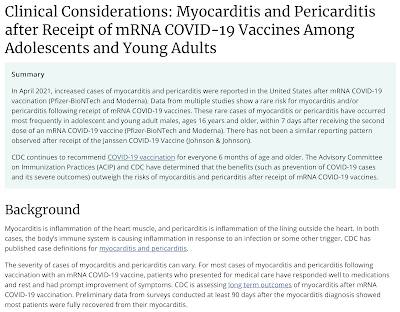
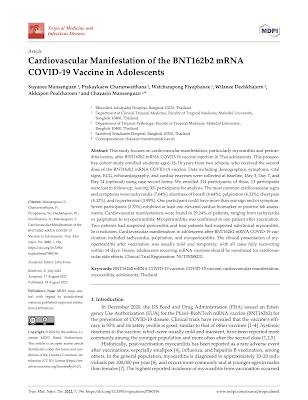
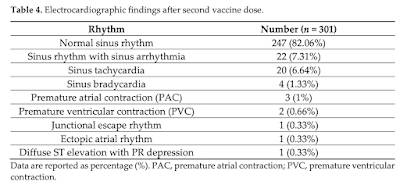
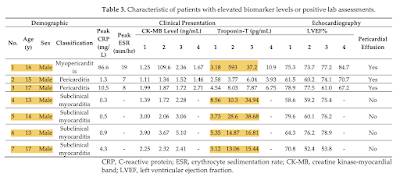
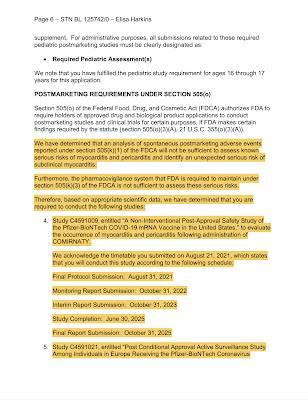
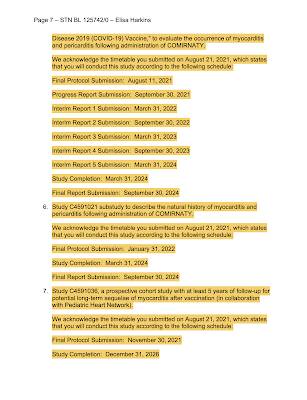
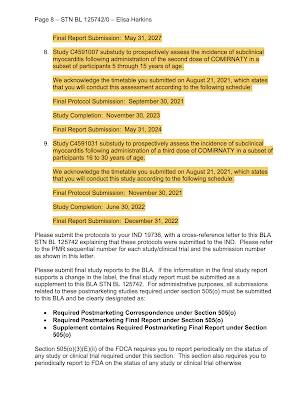
Be the first to comment